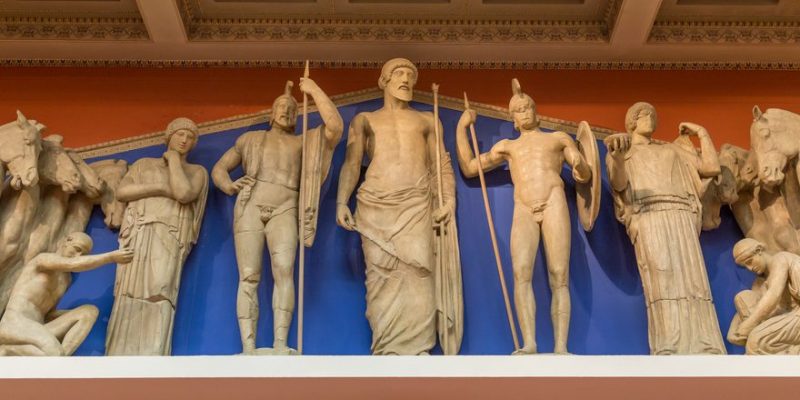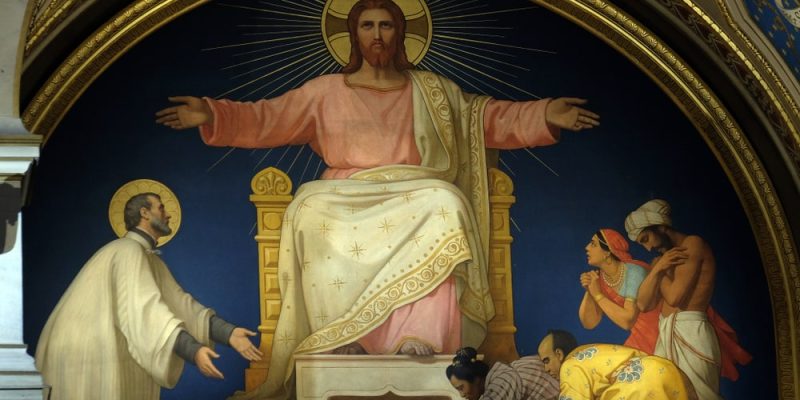We explain what polytheism is, what its characteristics are and what its origin was. Also, its differences with monotheism and some examples.

What is polytheism?
Polytheism is the religious belief that there are many gods. In polytheistic religions, each divinity is usually associated with a power and certain aspects of life, such as the elements of nature or human activities. Most archaic religions, such as those of Ancient Egypt, Ancient Greece, and Ancient Rome, were polytheistic.
polytheism It differs from monotheism, which is the belief that there is only one god defended by religions such as Judaism, Christianity and Islam. Instead, throughout history, most polytheistic cultures recognized the beliefs of other societies and, in some cases, even incorporated the divinities of other cultures into their own pantheon.
polytheistic religions integrate deities of different types, ranks and forms of worship. It is common to differentiate the most important gods from the pantheon of minor deities, who exist under the tutelage of other divine forces. In this sense, polytheistic religions created extensive mythologies in which the origin of the world, divinities, humanity and all things is explained through the interaction between their gods.
The word “polytheism” comes from ancient Greek and is made up of the terms copwhich means “multiple,” and theoswhich means “god.” The suffix “-ism” denotes a practice or belief. Therefore, “polytheism” literally means “belief in many gods.”
Frequently asked questions
What is polytheism?
Polytheism is the belief in multiple gods.
What cultures in history were polytheistic?
Many cultures in history were polytheistic, such as the Greeks, Romans, Egyptians, Norse, Celts, Mesopotamians, Aztecs, and Incas.
How is polytheism different from monotheism?
The main difference is that polytheism believes in multiple gods, while monotheism maintains that there is only one god.
Are there polytheistic religions today?
Yes, there are various polytheistic religions practiced today, such as Hinduism, traditional Chinese worship, Japanese Shintoism, and Santeria.
Characteristics of polytheism
Among the main characteristics of polytheism are:
- Diversity of gods. Polytheism is characterized by the belief in multiple gods and goddesses, with different levels of importance and power. Each divinity is associated with different aspects of nature, human activities or abstract concepts.
- Mythology. Polytheistic religions often have rich and detailed mythologies that tell the stories and relationships between the gods. These mythologies narrate the origin of the world, the exploits of the gods and their interactions with human beings.
- Rituals and worship. Believers of polytheistic religions perform specific rituals and ceremonies in honor of their gods. These acts may include sacrifices, offerings, prayers, and festivals specific to each deity.
- Temples and shrines. In polytheistic societies, it is common to find temples and sanctuaries dedicated to different deities. These sacred sites serve as centers of worship and are often the focus of religious and community activity.
- Adaptation and syncretism. Polytheism often shows a great ability to adapt and incorporate deities and practices from other cultures and religions. This syncretism (union of different beliefs) allows the evolution and expansion of religious traditions.
Origin of polytheism

polytheism It has a very ancient origin. Tribal societies of the late Paleolithic period are believed to have believed in various spirits. These spirits could be those of their ancestors, those of places, such as mountains and forests; or those of animals. Each tribe especially worshiped one spirit above others, whom they considered their own guardian or patron god.
In ancient times, polytheistic beliefs developed as religious systems in great empires, such as Egypt and Babylon. As different tribes or cities came under centralized governments, their gods were incorporated into a broader pantheon.
On the other hand, as the political, economic and social organization became more complex, the different gods became associated with certain human activities. They influenced areas of nature, such as storms or earthquakes, and aspects of human emotions, such as love or motherhood. Likewise, they were linked to specialized occupations, such as metallurgy, commerce or artisanal production.
Examples of polytheism

Among the most prominent examples of polytheistic religions are:
Ancient Egypt
The religious tradition of Ancient Egypt was made up of dozens of gods associated with various aspects of nature and society. The pharaohs (kings) were considered intermediaries between the gods and humans. Among the gods of Ancient Egypt, the main ones were Ra (god of the sun), Osiris (god of resurrection and the afterlife), Isis (goddess of magic and motherhood), Horus (god of the sky) and Anubis (god of death and mummification).
Ancient Greece
The religious and mythological system of Ancient Greece was made up of a multitude of gods and goddesses, each with their own personality, domain and myths. Among the ancient Greek gods, the main ones were Zeus (god of sky and thunder), Hera (goddess of marriage), Poseidon (god of the sea), Athena (goddess of wisdom) and Apollo (god of the sun and mountains). arts).
Ancient Rome
The mythology of Ancient Rome was similar to Greek mythology, but integrated into Roman culture. Many Roman gods had Greek equivalents, although with some differences in their attributes and mythologies. Their main gods were Jupiter (equivalent to Zeus), Juno (equivalent to Hera), Neptune (equivalent to Poseidon), Minerva (equivalent to Athena) and Mars (god of war).
Hinduism
Hinduism is one of the oldest and most widely practiced religions in the world, with an extensive pantheon of gods and goddesses. Although it has monotheistic elements, in practice it is broadly polytheistic. Their main gods are Brahma (the creator), Vishnu (the preserver), Shiva (the destroyer), Lakshmi (goddess of wealth and prosperity) and Saraswati (goddess of knowledge and arts).
Nordic peoples
Norse mythology, corresponding to the Germanic and Scandinavian peoples prior to Christianization, was made up of a pantheon of gods and goddesses who governed different aspects of the natural and human world. Their main deities were Odin (god of wisdom and war), Thor (god of thunder), Freyja (goddess of love and fertility), Loki (god of deceit and mischief) and Balder (god of beauty and light).
Aztecs
The religion of the Aztecs of Mesoamerica had a complex cosmology and a pantheon of gods related to agriculture, war, and natural phenomena. Among the Aztec gods, the main ones were Huitzilopochtli (god of war and the sun), Tlaloc (god of rain), Quetzalcóatl (god of wind and wisdom) and Tezcatlipoca (god of night and discord).
Incas
The religion of the Incas of the Andes was centered on the worship of nature and the stars, with a strong emphasis on the worship of the sun. Their main gods were Inti (god of the sun), Viracocha (creator god), Pachamama (goddess of the earth) and Mama Quilla (goddess of the moon).
Polytheism and monotheism

Unlike polytheism, which believes in numerous gods, monotheism maintains that there is only one God. The creation of everything that exists is attributed to that single divine force, as well as the possibility of being everywhere, knowing everything and being able to do everything.
For monotheism, there is only one “true” God; The rest of the divinities are considered deceptions or lies. For this reason, monotheisms tend to exclude other faiths and consider any other form of religiosity as “false” or “pagan.”
Currently, the most practiced religions in the world are monotheistic: Christianity, Islam and Judaism.
References
- Ellwood, RR and Alles, GD (Eds.). (2007). Polytheism. The Encyclopedia of World Religions. Facts on File.
- Mercatante, AS and Dow, JR (2009). Introduction. World Mythology and Legend. Facts on File.
- Smart, N. (2024). Polytheism. Encyclopedia Britannica.
https://www.britannica.com/





